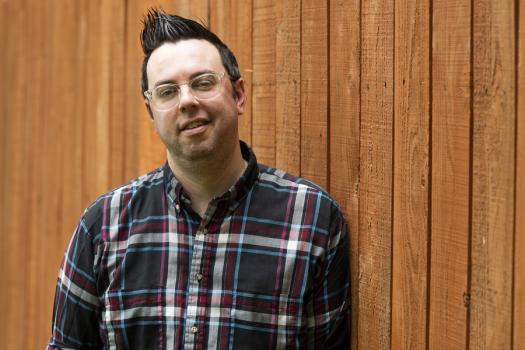
Illustrator and Assistant Professor Mike Laughead serves as Chair of Columbus College of Art & Design’s Illustration and Comics & Narrative Practice majors.
Today’s illustrators are employed in diverse industries- from game art and animation, to advertising and publishing, product design and more. Successful illustrators marry the fine arts with commercial and technical skillsets to bring vision to life while meeting the needs of clients and consumers.
Columbus College of Art & Design doesn’t seek to create one type of illustrator over another; instead, its Illustration BFA encompasses the many avenues and mediums that illustrators can explore. Working with an enviable assortment of tools, CCAD illustration students are encouraged to experiment and carve their own paths by leveraging state-of-the-art facilities, knowledgable working faculty, and industry relationships forged with the artistic and commercial communities nearby.
Overseeing the program is illustrator Mike Laughead who also heads up CCAD’s Comics & Narrative Practice major. As a children’s book and graphic novel illustrator, Laughead brings his professional experience to the classroom while working alongside a roster of faculty who likewise are working artists. For our latest Q&A, we catch up with Laughead to learn more about CCAD’s Illustration program. Enjoy!
ACR: Mike, thanks for participating in our latest Q&A. Starting things off with you, when did you get the bug for art and illustration, and how did you develop your skills?
Mike Laughead: I’m very happy to participate! Like many of our students at CCAD, I can’t remember a time that I haven’t been drawing, tracing, or consuming visual media. One of my earliest memories is cutting Superman out of a comic book. I’m not sure what I did with the cutout after that, but I just had to cut him out.
As far as developing skills in art and illustration, I kept the habit of consuming visual media and copied it to make my own drawings. I spent a lot of time in my room reading comics and making some of my own, as well as just drawing characters. Through high school, I spent as much time as possible in the art room and with the help of a tech-savvy friend, learned scanning and picture editing in Photoshop 3. When I went to college, I was forced to learn observational drawing and painting for which I will be eternally grateful. And through all of that time I was always drawing. It is something that I just love doing and I’ve never gotten sick of it. I now keep a sketchbook as a place to keep all of those drawings together.
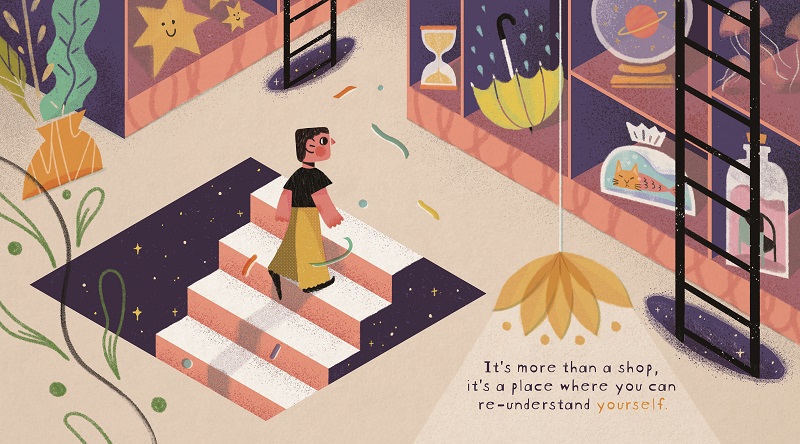
ACR: What were the merits of Columbus College of Art & Design’s llustration program that attracted you to it as both a working professional and an educator?
ML: CCAD has a history of the same kind of observational drawing background that I received in college and that was very appealing to me. But what I was really attracted to was the diversity of classes, facilities, and mentors available. Each student is going to develop a particular style or want to work in a particular branch of illustration. When those students seek out someone to help them, they will be able to find several faculty members who can guide them on their path and connect them with friends and acquaintances in the industry that can guide them. I came to CCAD as a graduate student and I grew a lot as an artist as soon as I connected with the Illustration faculty at the school.
ACR: CCAD develops fine artists who are also poised to meet commercial demands in the illustration marketplace. How do you do that?
ML: In order to help students find work and build careers after college, the CCAD Illustration program focuses on learning a variety of media- both digital and traditional- as well as observational drawing in the first two years. We also focus on self-promotion and finding a student’s future path in the field. Because we have students with such different career futures- whether it’s working in-house at Abercrombie and Fitch or McGraw Hill, doing a variety of freelance illustration, becoming tattoo artists, or selling poster prints in art and craft fairs around the country- the classes in the final year of CCAD are very open to allow each student to build their portfolio and focus on their own future career path.
ACR: Every CCAD student is required to take core studio and liberal arts courses. Tell us a bit about these prerequisites and their role in the context of illustration.
ML: Students at CCAD will be spending the vast majority of their time in studio art classes directly related to illustration, but their CORE studio and liberal arts are where many of them find inspiration for their illustration work. CORE studio and art elective classes are related to or completely outside of the illustration major. Philosophy, writing, and art history classes spark interests that often lead to subject matter that students were unaware of or only had passing knowledge of. Many of our students enjoy screen printing and printmaking classes or other media-specific classes and end up adapting them to their illustration practice. One class that many students take is a self-publishing class where they go through the process of creating a book from concept to print—each student having physical copies of their book by the end of the semester.
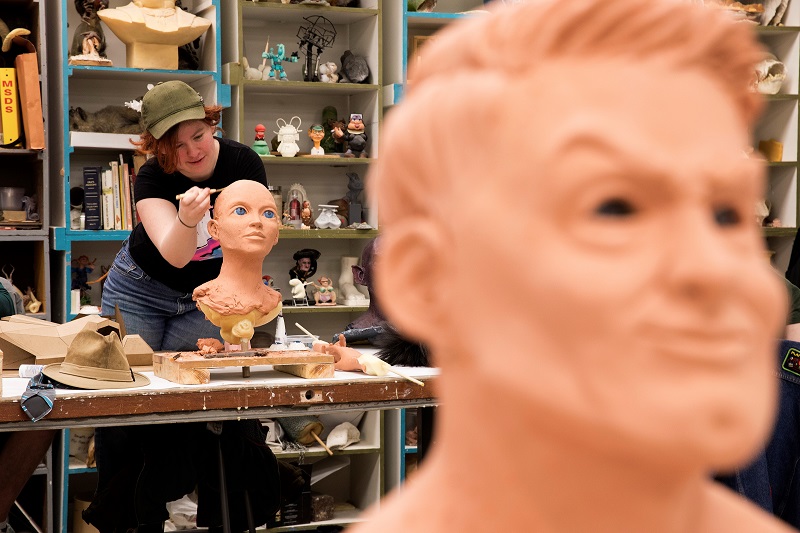
ACR: On that note, illustrators are employed across many industries as you’ve mentioned- from advertising and publishing, to animation, game and product design, and much more. Does the curriculum reflect these diverse avenues of the art?
ML: In a short answer, yes! The field of illustration is so diverse; we know that we are often preparing students to do a job where the title won’t be “illustrator” but something much more specific. For this reason, we require students to try out many different media, including motion and 3D, so they not only can find their focus but are able to adapt their work when clients need something different.
I have heard stories from several of our alumni that said they were able to get jobs because they were not only able to illustrate but to do lettering and making all of it move. Along with requiring introductions to different mediums, we also encourage students to take the classes that will most help them in their future career. This past year we had illustration students in senior capstone classes not only in their major, but in the comics and animation majors as well.
ACR: The use of 3D continues to grow within illustration, and your students have access to an enviable 3D lab as well as a computer lab. Tell us about those, Mike.
ML: One of the most impressive things that I saw on one of my first visits to CCAD is the 3D illustration lab. CCAD has a rich history of 3D commercial art and the lab is full of creatures, masks, and sculptures. Many alumni have gone on to careers designing halloween masks and creating sculptures for haunted houses. Students have the tools to create small sculptures and make molds to mass produce them or work on larger pieces in collaboration with other students. One of my favorites over the years was a sculpture of an 8-foot tall rusted robot.
The digital 3D class uses a program called ZBrush. The students also are taught how to incorporate these 3D models into Photoshop illustrations and have access to 3D printers to print their designs. Many students that want to work in character design for the animation and gaming fields love this class and end up using ZBrush to create their capstone projects.
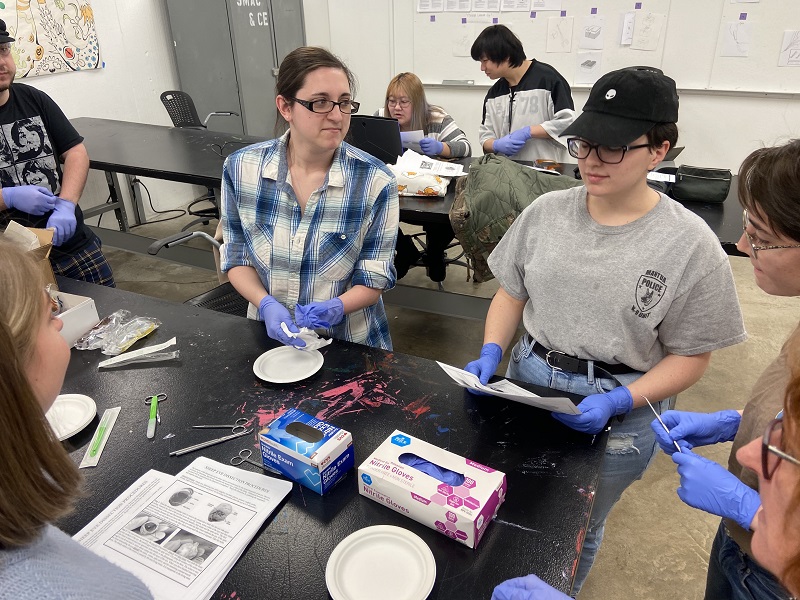
ACR: On the flipside, you also have an amazing 2D lab for students in addition to other campus labs including FabLab. Give us a glimpse into these.
ML: There are several Cintiq labs throughout campus, including two classrooms in Kinney Hall where Illustration is housed. Students can either purchase a stylus to use or check them out from our IT helpdesk. These are great for students who want to use them on a temporary basis or try them out before purchasing something similar for use in their homes. The IT helpdesk also is where students can print work for class or their own use. The printing is free, they only buy the paper! Students have access to large format roll printing there, as well.
Our FabLab is where 3D printing is done, as well as laser cutting paper or wood products. I’ve seen many students use these services to create products they will then sell at art fairs and conventions. As I mentioned, we also have a printing lab with access to different processes, including screen printing, not to mention our many other fine arts labs, such as glassblowing, jewelry making, woodshop, etc.
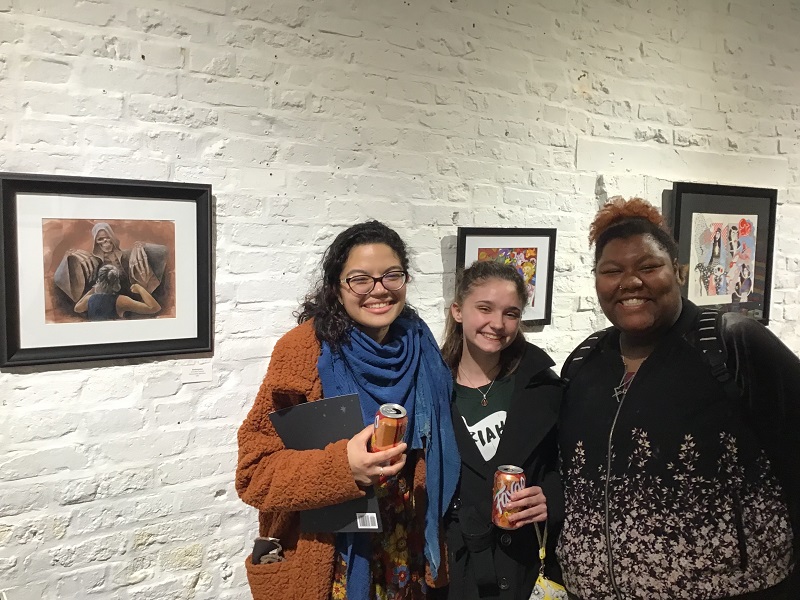
ACR: The Illustration Department works with industry partners. How do they impact the education that your students receive?
ML: Students work with companies and individuals in several capacities. First off, many clients both large and small seek out students to do freelance work through our CCAD job board. It’s a great way for students to dip their feet into working for clients. Some, but not all, illustration students desire internships and those that do usually find them working as graphic designers who illustrate. Pixel Park is a local design and motion studio where several of our illustration majors have interned and some continued into full-time work there.
This past semester we had class projects with American Greetings and Zox in which students did a class project but worked with art directors from those companies to create work for an actual project. We also have visiting artists come to classes in person or through video conferencing to explain about their particular work and answer questions. Our Illustration Student Collective has brought in visiting artists, as well.
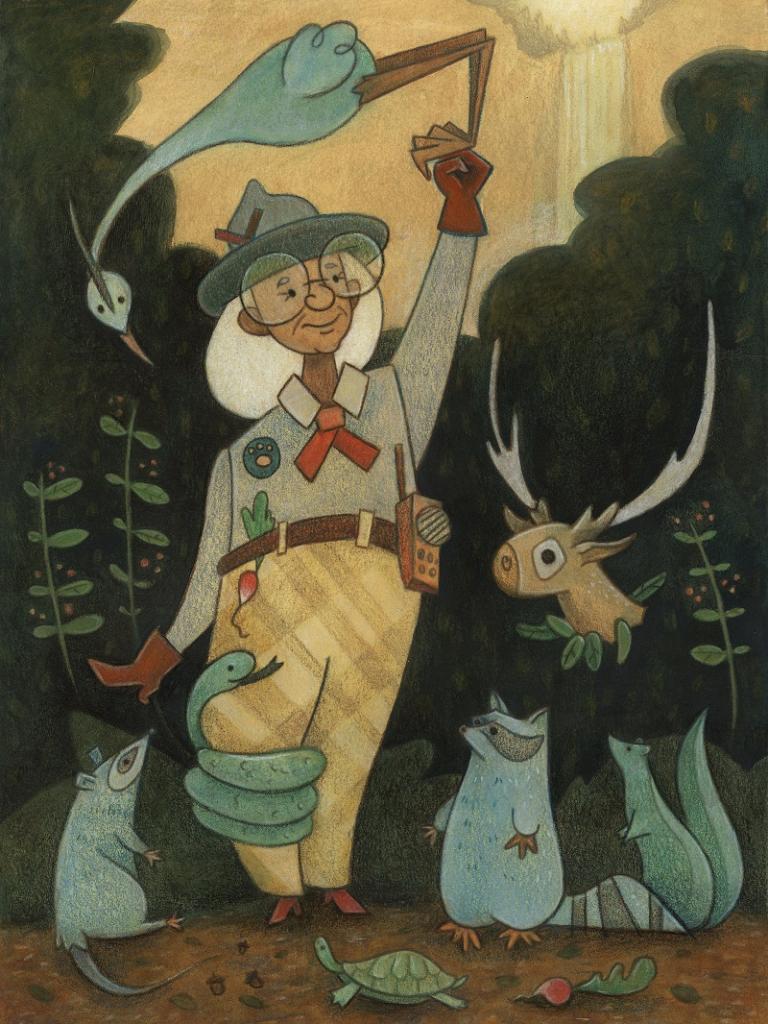
ACR: Last but not least Mike, what would you tell an aspiring illustrator about the study of illustration at CCAD that hasn’t yet been mentioned?
ML: If you want to be an illustrator, you don’t have to know the direction of your career right away, but you do need to keep improving your work. The best way you can do that is to keep making work. I use a sketchbook for this- some people have an iPad to draw on, and others are always making little sculptures or paintings. If you are an aspiring illustration student, just use the tools you have available and the mediums you are interested in. And don’t worry about what you might be missing.
At CCAD, we will help you work on any area that you need to improve. If you love anime, go ahead and draw anime characters! We will help you learn how to draw the environment around those characters in correct perspective and then how to color that all in photoshop. You will get the chance to try out all the different aspects of illustration, so you can find your place in such a diverse career field.
Check out more interviews at Animation Career Review's Interview Series.
